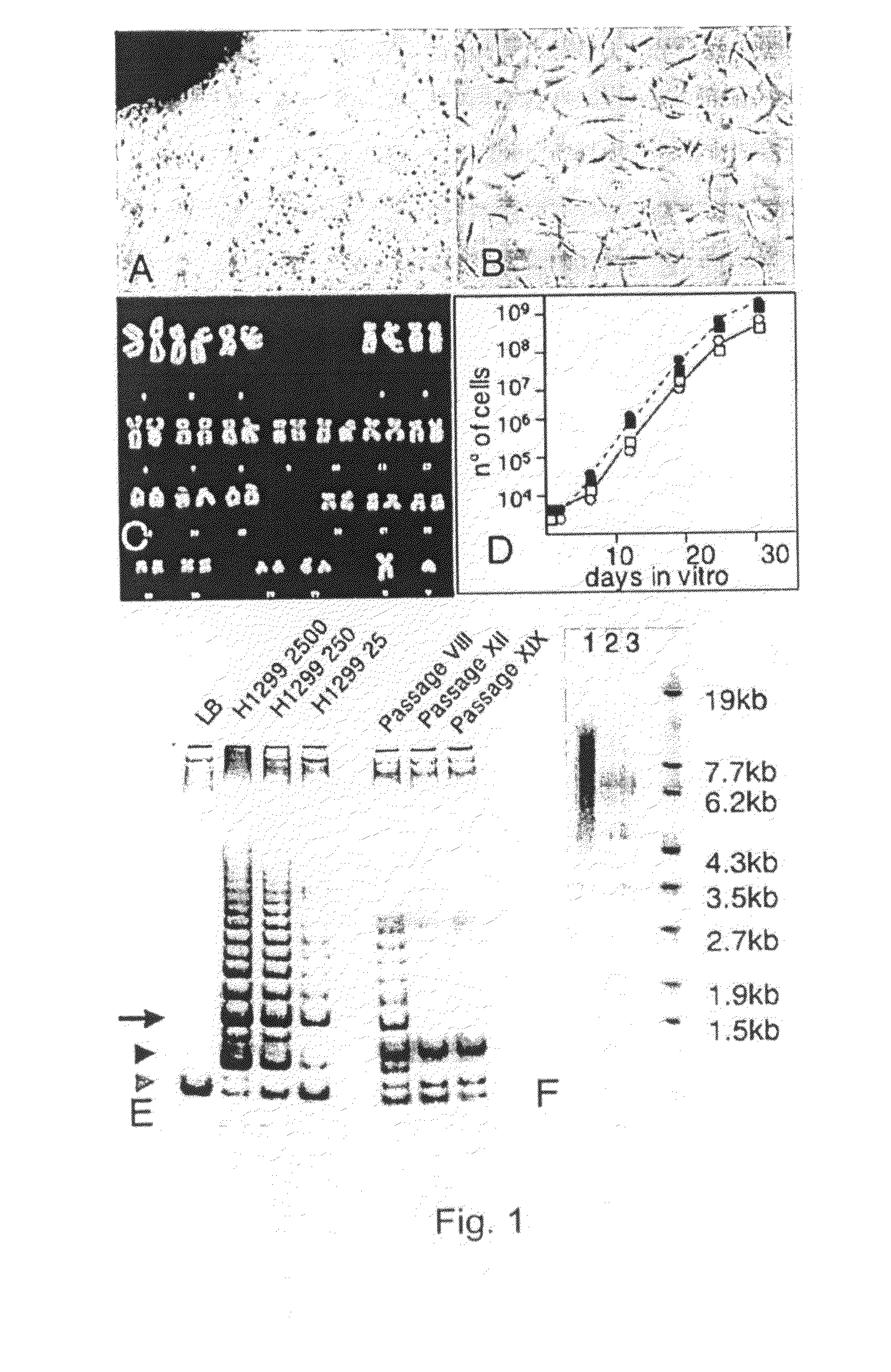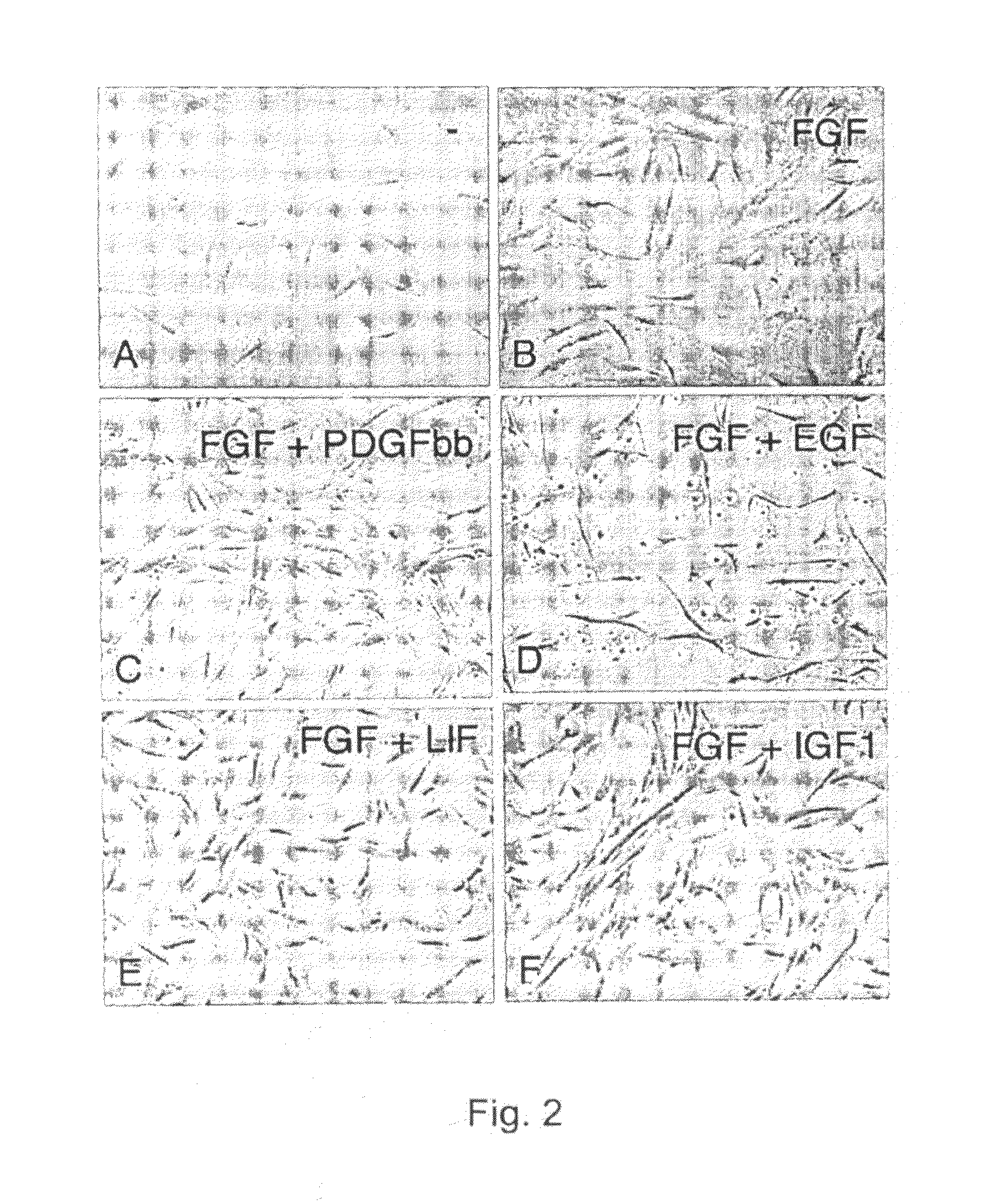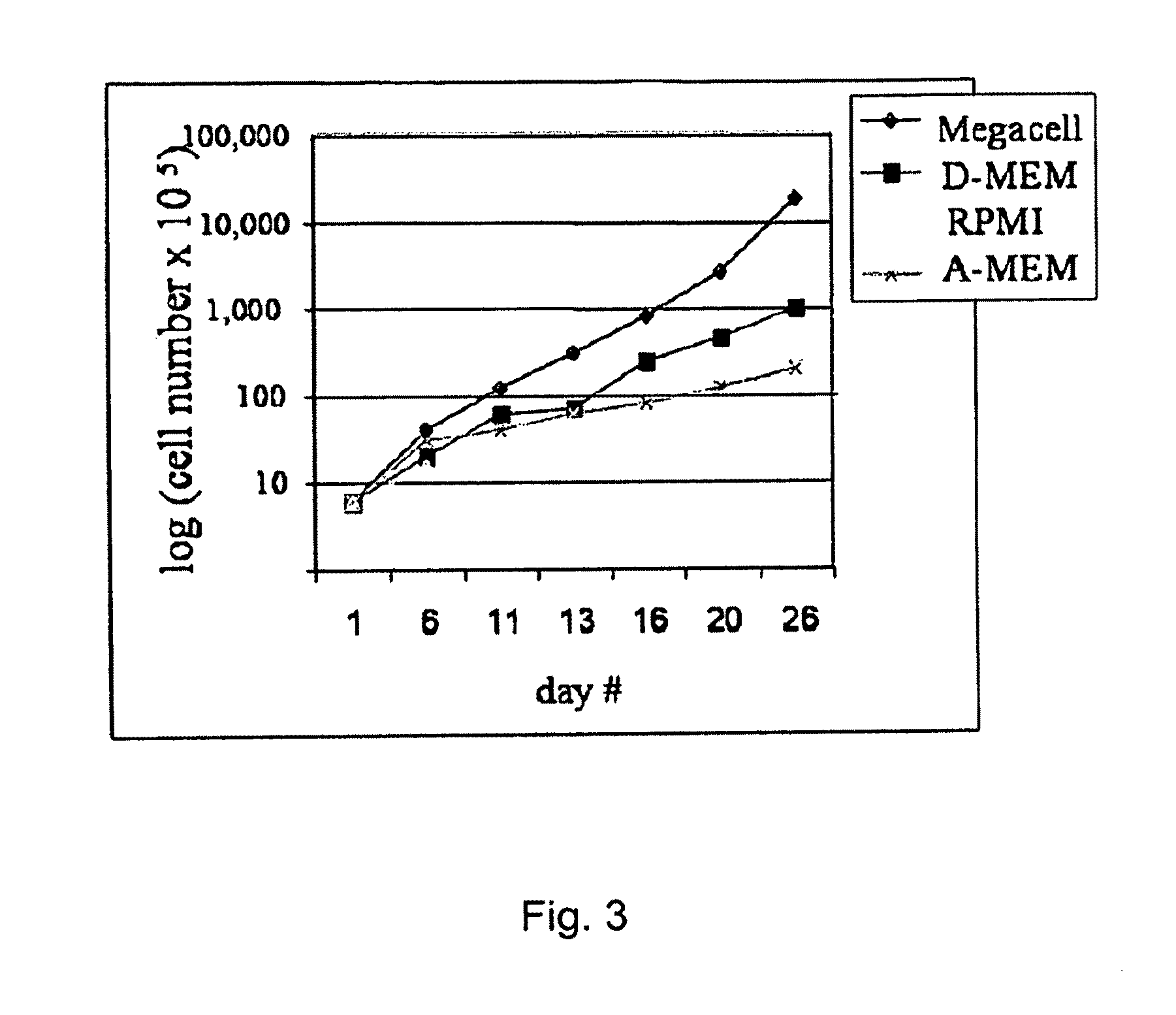Skeletal muscle periangioblasts and cardiac mesangioblasts, method for isolation and uses thereof
a technology of mesangioblasts and skeletal muscle, applied in the field of stem cells of skeletal muscle, can solve the problems of reducing the proliferation potency of satellite cells, limiting the potential use of primary myopathies, and difficult cell therapy protocols us
- Summary
- Abstract
- Description
- Claims
- Application Information
AI Technical Summary
Benefits of technology
Problems solved by technology
Method used
Image
Examples
Embodiment Construction
[0014]The present invention describes the isolation and characterization of human cells similar to, but distinct from previously described mesoangioblasts (9) from both skeletal and cardiac muscle. In addition, the authors demonstrated that cells isolated either from adult skeletal muscle (herein named periangioblasts) and adult cardiac muscle (herein named cardiac mesoangioblasts) fulfill all the criteria requested for attempts to treat muscular disorders including muscular dystrophy and cardiopathies, respectively.
[0015]Indeed, the invention describes the isolation of periangioblasts and cardiac mesoangioblasts from biopsies of mammalian adult skeletal or cardiac muscles, respectively.
[0016]Therefore it is an object of the present invention a skeletal muscle periangioblast cell population characterized by expressing the following marker phenotype: CD31−, CD34−, CD45−, CD62L−, CD106−, CD117−, CD133− CD146+, CD49b+, CD13+ and CD44+. Preferably, the skeletal muscle periangioblast cel...
PUM
| Property | Measurement | Unit |
|---|---|---|
| real time PCR | aaaaa | aaaaa |
| diameter | aaaaa | aaaaa |
| thick | aaaaa | aaaaa |
Abstract
Description
Claims
Application Information
 Login to View More
Login to View More - R&D
- Intellectual Property
- Life Sciences
- Materials
- Tech Scout
- Unparalleled Data Quality
- Higher Quality Content
- 60% Fewer Hallucinations
Browse by: Latest US Patents, China's latest patents, Technical Efficacy Thesaurus, Application Domain, Technology Topic, Popular Technical Reports.
© 2025 PatSnap. All rights reserved.Legal|Privacy policy|Modern Slavery Act Transparency Statement|Sitemap|About US| Contact US: help@patsnap.com



